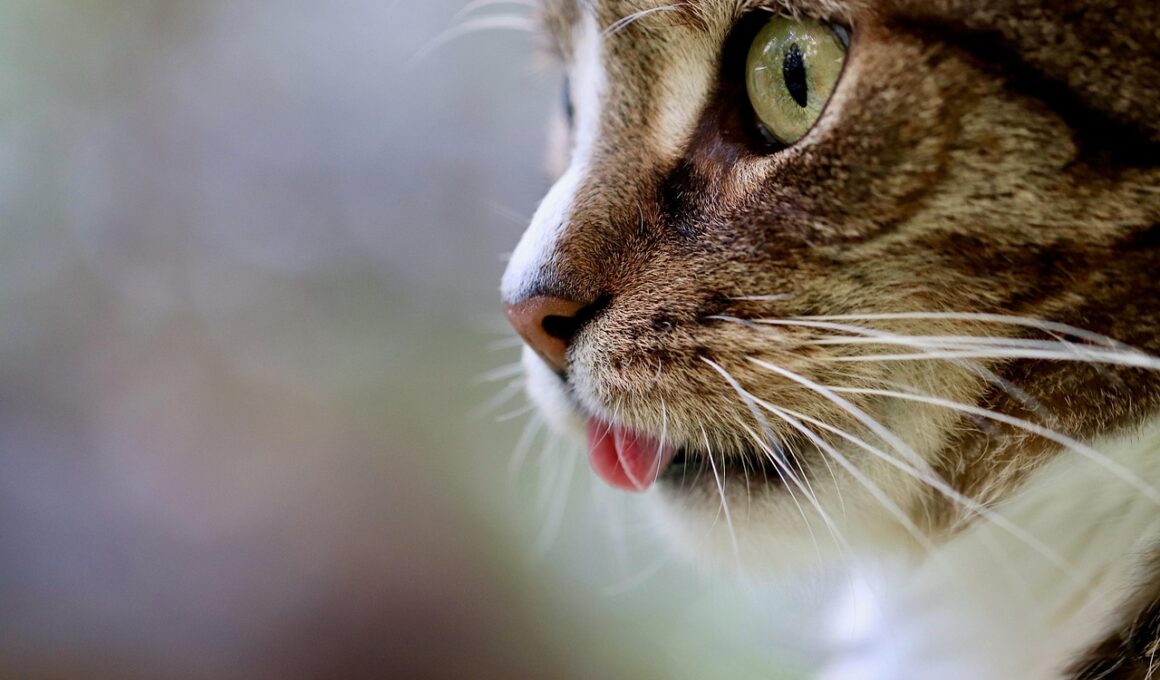Legal Strategies for Advocating Stronger Cat Protection Laws
Animal cruelty towards cats continues to be a pressing issue requiring robust legal frameworks. Advocating for stronger cat protection laws is vital for ensuring that these animals receive the respect and care they deserve. Understanding existing animal cruelty laws can inform strategies to develop more effective regulations. Many jurisdictions have basic laws against animal cruelty but lack specific protections for cats. Consequently, a focused approach could address loopholes that enable harmful behaviors. Advocates can start by researching local laws and identifying deficiencies to address systematically. Collaboration with local animal welfare organizations can amplify voices in the community by raising awareness about cat protection issues. Additionally, organizing workshops can educate the public on the importance of safeguarding feline welfare. Mobilizing communities ensures more support for legal action toward stronger regulations. Specific strategies include drafting proposals for new legislation and starting petitions to demonstrate public demand. Overall, advocating for stricter laws relies on community involvement and effectively mobilizing resources. Highlighting legislative shortcomings can engage lawmakers, urging them to consider changes that protect cats more diligently.
Engagement in Legislative Processes
Engagement in legislative processes is crucial for creating lasting change in animal cruelty laws. Advocates for stronger cat protection must familiarize themselves with local and state legislatures. This familiarity allows for direct interaction with legislators, including meetings or writing letters to express concerns or suggest reforms. Scheduling visits to discuss cat welfare issues can provide advocates with personal connections to representatives. Sharing anecdotes of cats’ suffering or success stories about rescued felines can make a case for stronger laws more compelling. These narratives personalize legislative issues, making it harder for lawmakers to ignore. Grassroots campaigns offer another innovative engagement method. Organizing rallies, letter-writing campaigns, or awareness events can galvanize public support, translating into pressure on legislators. Utilizing social media platforms can enhance outreach, spreading awareness quickly and showing collective demands for change. Effective online campaigns can reach a broader audience, galvanizing additional support. Advocates may also align with larger movements focusing on animal rights, enhancing legitimacy and reach. The power lies in numbers, reinforcing demands for change that ultimately push legislators toward action in favor of better cat protection.
Creating public awareness about the importance of cat welfare is foundational for implementing effective legal changes. Advocating for animal rights strengthens the case for stricter animal cruelty laws. Various educational initiatives can promote this awareness, from seminars to informative pamphlets detailing the impact of cruelty. Notably, collaborating with local animal rescues or humane societies amplifies messaging efforts and offers take-home resources on cat care and rights. Schools can incorporate programs focusing on empathy towards animals, potentially fostering a new generation of cat advocates. Engaging younger audiences through education instills a sense of responsibility towards these animals. Moreover, hosting events at community centers or pet fairs can significantly raise awareness about feline welfare. Providing spaces for discussions creates opportunities for sharing experiences and concerns regarding local cat welfare issues. Additionally, engaging with media outlets can influence public perception, drawing attention to ongoing cases of animal cruelty. Highlighting stories through articles or news segments showcases the struggle for better legal protections. Ultimately, continuous public engagement empowers community voices, bringing attention to cat welfare, setting the stage for legislative change.
Building Coalitions and Alliances
Building coalitions and alliances between various stakeholders strengthens advocacy efforts for cat protection laws. Networking with volunteer groups, shelters, and legal organizations can unify resources and perspectives. By coming together, diverse parties can pool knowledge and experience, enhancing advocacy strategies and outreach. Often, local animal shelters have insights into prevalent issues affecting cats. Gathering together with these organizations creates a more substantial support network, bolstering efforts to change laws. Additionally, involving veterinary professionals in advocacy efforts can elevate credibility and garner more public trust. Their expertise highlights the necessity of improved laws and the consequences of animal cruelty. Collaboration with academic institutions can offer research support as well. Producing studies that highlight the effects of cruelty on cat populations can provide solid evidence for proposed changes. These factual underpinnings may sway lawmakers in favor of more comprehensive protections. Notably, public demonstrations showcasing this united front can not only educate the community but also create momentum for change. The combined force of multiple organizations advocating for the same goal can significantly increase participation and potential impact on legislation.
Once strong community and coalition support is established, advocating for legislative change involves persistent efforts. Continuous follow-up with lawmakers, including sending reminders about petitions and demonstrating community support, keeps the issue relevant. Regularly attending public meetings, including local government sessions, enables advocates to voice concerns and bring attention to cat welfare. Forming a continuous dialogue with legislators emphasizes the message that animal protection matters to constituents. These meetings also serve as platforms for sharing data collected from coalition partners or research studies highlighting issues faced by local cats. Alongside direct engagement, public protests can also illustrate the demand for stronger laws. Mobilizing community members to participate visually demonstrates the urgency of the situation, capturing media attention. Memorable slogans and banners can accompany protests to drive the message home. Additionally, maintaining a robust online presence can help advocates share information and connect mobilization efforts. Utilizing platforms to circulate petitions or share updates enhances community involvement. With these consistent approaches, advocates keep cat welfare alive within the legislative conversation, increasing the likelihood of substantive legal changes.
Utilizing Media and Online Platforms
Utilizing media and online platforms is essential for amplifying advocacy efforts around cat protection laws. Traditional mediums like newspapers, radio, and television remain powerful tools to disseminate messages about the need for stronger protections for cats. Writing opinion pieces in local publications or participating in interviews can share important narratives, educating the broader community on issues surrounding animal cruelty. Beyond traditional forms, social media channels can exponentially enhance outreach. Creating engaging content, such as infographics or videos, can more effectively capture public interest, drawing attention to advocacy campaigns. Social media platforms allow advocates to interact with community members, encouraging dialogue about cat welfare. Using hashtags can help link various campaigns, creating a network of voices advocating for change. Moreover, digital petition platforms enable rapid collection of signatures, demonstrating public support for proposed legislation. These signatures underscore the demand for action, which can be presented to lawmakers as indicative of community sentiment. Overall, integrating media and online strategies component amplifies outreach efforts significantly, fostering a more informed community where stronger protection laws for cats have a fighting chance of being established.
In conclusion, advocating for stronger cat protection laws necessitates a multifaceted approach combining community engagement, legislative action, and media outreach. Building coalitions unifies various stakeholders in the advocacy landscape, allowing for coordinated efforts. Public awareness campaigns educate and galvanize communities to rally around the cause. Engaging directly with legislators and fostering open dialogues emphasize the necessity for legal reforms in animal cruelty laws. Ultimately, the goal is to instill lasting legislative change that supports feline welfare and ensures their protection from cruelty. Consistent advocacy can lead to policy changes that resonate throughout communities, shaping a future where cats are defended by comprehensive laws. Empowering individuals and fostering collaboration increases the potential for success in these endeavors. The importance of cats in our lives cannot be overstated; they deserve legal safeguards that protect them from harm. With continued efforts, advocates can create impactful change, paving the way for better legal protections for all cats. All cats deserve our protection, and together, we can make sure they receive it effectively.


